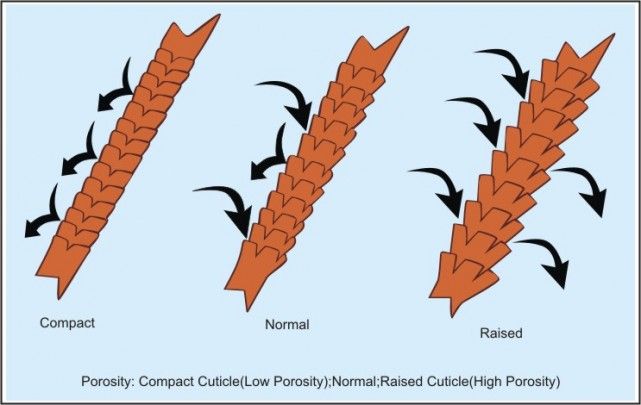Do you realise that oil’s effectiveness on hair depends on right choice of the cosmetic. Hair porosity is a key to effective hair care. The outer hair layer is responsible for better or worse oil absorption.
Before you proceed with hair oiling, meet your hair type and match it with the vegetable oil containing the ideal particles size.
When going for shopping, you have a plan in your mind. You have a given problem and you go looking for the cosmetic that will be a solution. You know little about how the skin and hair is built, so it is easy to be tempted by the fact that the cosmetic is recommended for example for damaged hair. However, it in fact can have no ingredient that can manage the problem.
This is why knowing your hair porosity is so important. Knowing the hair type, it is easier to choose the perfect product for hair care. Brief analysis of the composition will then allow (when choosing the cosmetic at the store) to determine whether the cosmetic contains essential to your hair oils, or not. Therefore, what should you know?
 What is hair porosity?
What is hair porosity?
Hair porosity is a level at which hair cuticles are raised and it impacts hair texture. The higher the porosity, the more raised cuticles, greater damage and visibly rougher hair structure.
What porosity can hair have?
1. LOW POROSITY HAIR
This hair are outwardly healthy. Strands are well protected by the armour of sealed hair cuticles, so it is more difficult to damage it. Unfortunately, this is also related with worse absorption, weakening and weighting down. Low porosity hair is smooth, what can make work with such hair more tiresome. By nature low porosity hair is straight, heavy and flat (adhere to skin), so without oil, that helps with volume and elegant hairstyle it seems like a wishful thinking. Smooth hair are prone to slipping out of the tie, while stylisation cosmetics meet the barrier made out of closely sealed cuticles. This makes everything much harder.
2. HIGH POROSITY HAIR
The exact opposite to the low porosity hair is the one with high porosity. If you have this hair type, you must reach for deeply regenerating oils with intense action. High porosity hair is extremely damaged. The fault maybe in the genes, making hair more susceptible to weakness, or improper hair care. Frequent straightening, regular lightening and chronic use of curler cause, e.g. dryness, mattifying, brittleness, breakage, split ends, excess hair loss, etc.
3. MEDIUM POROSITY HAIR
The most difficult to describe is medium porosity hair, even though this is the porosity of most women in the world. It is said that medium porosity hair is in between the previous two. Strands are more damaged than low porosity hair, yet less than the one with high porosity. In fact, there can be differentiate two sub-types for medium porosity hair:
- closer to the low porosity,
- closer to the high porosity.
In order to determine how medium porosity hair looks like, it has to be said that each of this signs can be present, but not everything is fixed feature. Medium porosity hair can frizz more or less due to humidity. It often is prone to split ends and the dryness can be observed at the half of hair length down. The scalp can be oily and suffer from dandruff, while weaken hair bulbs are badly rooted in skin making hair more prone to falling out. Medium porosity hair can be also problematic when it comes to the stylisation – is difficult to comb it, while badly matched stylisation cosmetics can significantly worsen hair condition.
